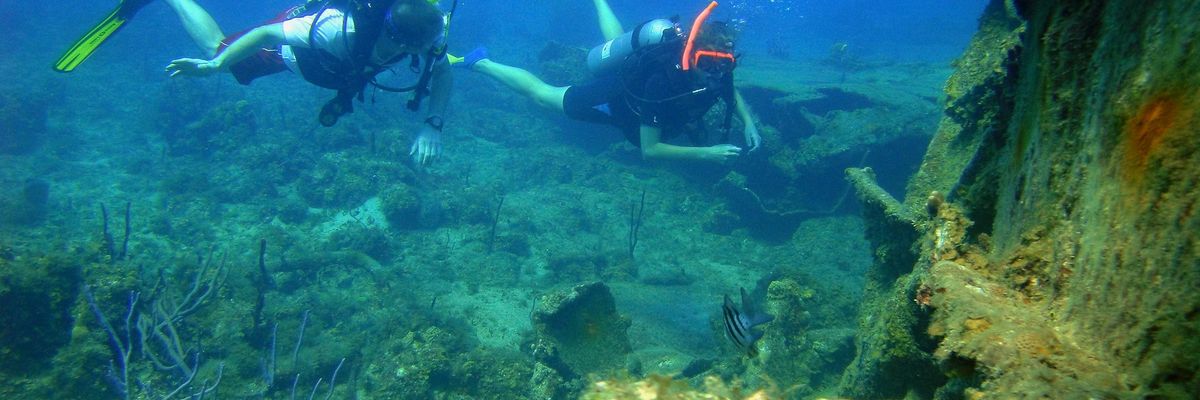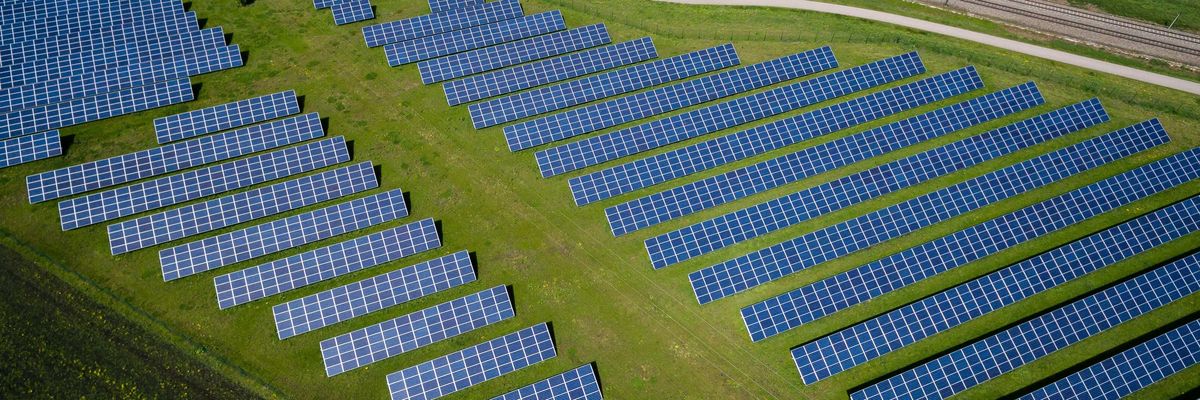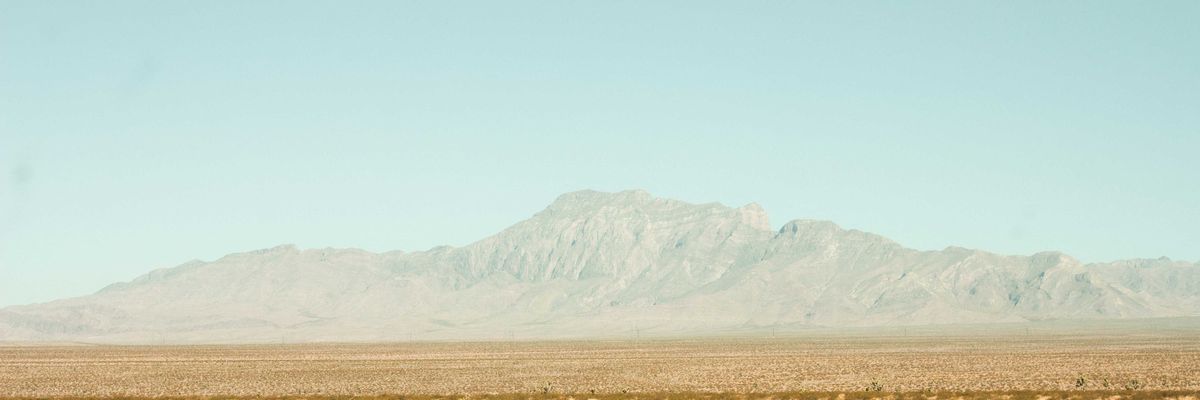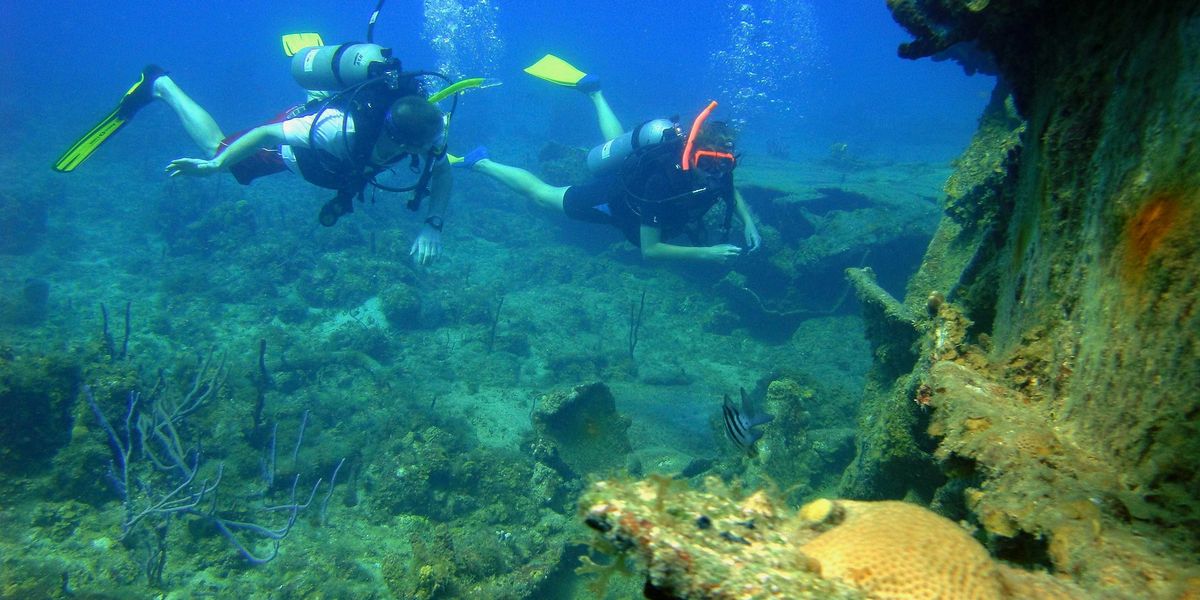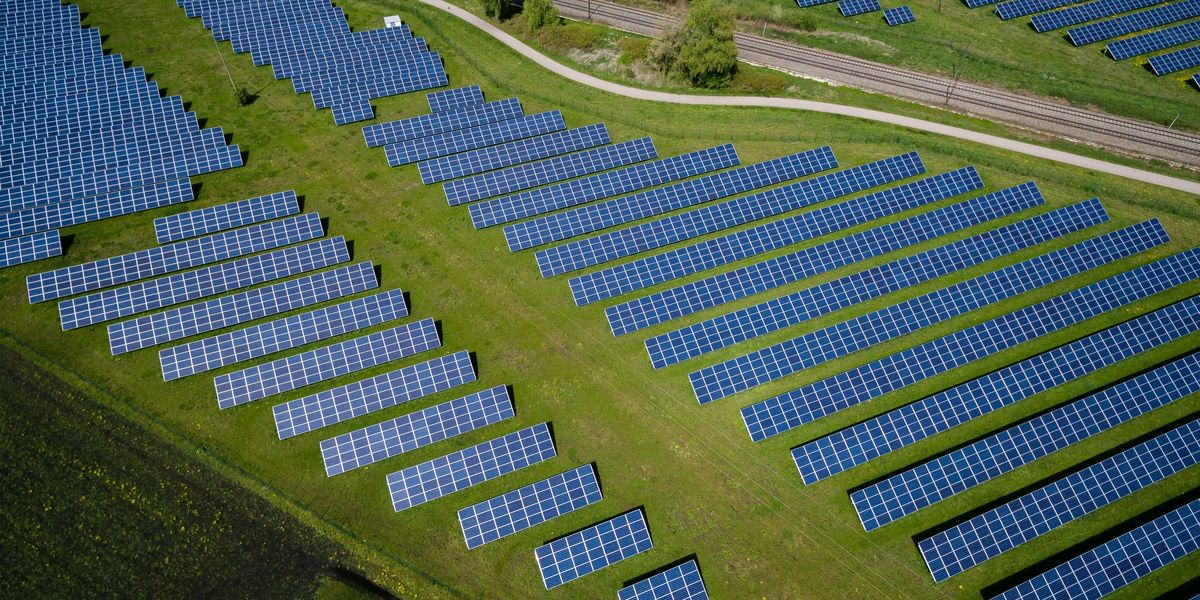climatetopstories
Essen's experiment: Can going green revive a post-industrial economy?
Will green tourism be profitable enough for a German city to regain its former economic strength?
The shores of Baldeneysee, a ribbon of a lake that feeds into the Ruhr river near Essen, are busy. Schoolchildren cannonball into the water as sunbathers sit on beach chairs, nurse their beers and watch the paddleboarders pass by.
It wasn’t always like this. “When I was a little boy in the 70s, every morning we used to sweep coal dust and ash off our window panes,” recalls Frank Martini, an Essen resident. “Emissions from the furnaces and ovens of coal and steel industries stained our clothes left outside to dry.”
The Ruhr river has been at the heart of environmental debate in Germany since the 1960s: coal and steel mining, which fuelled the Germany economy, also eroded the Ruhr’s water quality. But it has now been certified fit for swimming by a team of marine biologists and aquatic ecologists in the Sichere Ruhr (Safe Ruhr) project. At long last, 46 years after it was closed for swimming, this section of the Baldeneysee has reopened.
It is a major victory for Essen in its long-running fight against the environmental degradation that made it a wealthy city in the first place. Known as a Graue Maus (grey mouse) after its once-prominent coal industries, Essen used to be the face of industrialisation in Germany. Its coal mines, iron and steel plants generated as much revenue as they released emissions and effluents into the air and water.
Facebook Twitter Pinterest
After 46 years of a bathing ban, the Baldeneysee lake is now open for swimmers. Photograph: Jochen Tack/Alamy
The coal mines closed in the 1980s; the last remaining active mine, Prosper Haniel, is likely to shut by the end of 2018. However, they left behind a profound effect on Essen’s environment: dirty water and unbreathable air.
The slow revival of its water bodies has been key to a surprise decision this year by the EU to name Essen its European Green Capital. The city deserves the honour; its efforts to improve green spaces have resulted in improved green infrastructure. The urban redevelopment project Gruene Mitte (Green Centre), characterised by waterbodies, greenery, a new inner-city estate and a park, was launched at the place of a former goods station, while the 100km-long bicycle highway, RS1, cuts through the heart of the city.
A city-funded urban gardening project, Gemeinschaftsgärten, now has 10 community gardens. In five years the project has spread across Essen, bringing together enthusiasts and people without outside space to grow vegetables on a share-what-you-grow basis. Sabine Baetz, who grew up in Stoppenberg, very close to the prominent coal mining area, volunteers at one of the gardens in the Holsterhausen neighbourhood. She marvels at the change. “In 2007, I was given a half-hour flight ride over Essen by my then-boyfriend as a birthday gift. The city’s green cover looked spectacular from above.”
Facebook Twitter Pinterest
The Zeche Zollverein, a Unesco world heritage site. Photograph: Jochen Tack/imageBROKER/REX/Shut
The largest of Essen’s disused coal mines, the Zeche Zollverein, is now a Unesco world heritage site and open for public viewing. The skeletal remains of the once flourishing mines and its coking plant watch over fresh construction: a housing project taking over part of the former plant. The coal washing complex is now the site of the Ruhr museum. Leafy Koln Mindener street, once a hive of activity, is now left to ruminate in the relative tranquility with only the rumble of the occasional car zipping by.
The tarred roads that once transported coal consignments are now open for cyclists, in a programme called Route der Industriekultur (route of industry culture). The route stretches 400km past highlights of the 150-year-old industrial heritage: most of the factories abandoned, a few preserved like the Zollverein.
“In its heyday, while the industries powered the city and the country’s economy, the Ruhr region even provided funds to other states that were only agrarian – like Baden Württemberg and Bavaria,” says Oliver Zöllner, a professor of media and sociology.
“A kind of economic apartheid cleaved the city into two when it was prosperous,” he recalls. While the rich lived in upscale southern neighbourhoods such as Margarethenhöhe, replete with row houses and tree-lined avenues, the poor were relegated to the northern neighbourhoods of Gelsenkirchen or Katernberg, where they lived in miners housing close to the collieries. When the mines shut and unemployment rose, labourers who couldn’t find alternative employment were pushed into what Zoellner calls “inter-generational inherited poverty”.
The city had no choice: it had to reinvent its economy. “The former industrial metropolis, where work never stopped,” write Reinhard Felden, Wolfgang Kintscher and Matthias Maruhn in the book Essen, “embarked on its transformation from a coal and steel metropolis into a commercial and high-tech centre.”
Facebook Twitter Pinterest
The coking plant Zollverein in use. Photograph: Ullstein Bild/Getty Images
Although it has made much of its newly green status, Essen still powers the country: the German energy company STEAG (which has a mix of coal and renewables) and the gas company OGE are both located in Essen. Recently, the energy companies e.on and RWE both opened renewable energy divisions in the city, their concrete and glass high rises providing a modern touch to the postindustrial skyline. And even as steel plants relocate to cheaper global destinations such as Brazil, Thyssenkrupp – which has shaped the economy here since the company founded its steel business in 1811 – recently decided to move its main headquarters to Essen. (It has since been taken over by the Indian steel producer Tata.)
“Services and academia are reshaping the economy in a minor way, too,” argues Zöllner. The city has two universities and a student population that fuels retail: a recent report shows increased footfall in Essen’s shopping districts. Businesses frequently attempt to capitalise on its brand reputation as “desk of the Ruhr”, a moniker that it shares with Dusseldorf and was reinforced by Thyssenkrupp’s move.
These efforts are yet to show a marked improvement in the city’s economy, however. Unemployment in 2017 remains at 11.1%, little change from a 2015 report that had it at around 12%.
“There is still not a lot of scope for employment here in Essen because the city has no startup scene that fosters entrepreneurial talent,” says Karolina Warkentin, a journalism lecturer. She says the students at Essen’s prominent university, Duisburg-Essen, leave for other cities such as Berlin as soon as they finish their studies. “To prevent the student talent drain, the government is promoting rental subsidies on co-working spaces so as to encourage startups to take root.”
An incinerator with a view: Copenhagen waste plant gets ski slope and picnic area
Read more
But as the environmental degradation is successfully arrested, the greenery of the beautiful German countryside – with possibilities for river cruises in the Ruhr river and its tributaries like the Baldeneysee – is inspiring the city to turn to tourism to reclaim its economy. That idea was given a shot in the arm with Essen’s naming as European Capital of Culture in 2010; seven years later, there is hope that the green capital win could keep the tourism momentum going.
“We are expecting a boost to the tourism economy this year, too. Our target is to hit the 500,000 visitors mark,” says Simone Raskob, who leads the city’s European Green Capital team. The opening of Baldeneysee to swimming could help – shacks on the beach now serve cocktails and beer, and many expect more parts of the Ruhr to open next.
Though it has revived its environmental fortunes, it is yet to regain its economic strength. “Essen has shaken off the coal dust of the industrial Ruhr,” write the authors of Essen. That may be true – but it has yet to find anything as profitable underneath.
Follow Guardian Cities on Twitter and Facebook to join the discussion, and explore our archive here
Topics
Cities
Green economy
Germany
Europe
news
Share on LinkedIn Share on Pinterest Share on Google+
Reuse this content
View all comments >
most viewed
Interfaith group addresses climate change.
Interfaith Power and Light, a nonprofit organization represented in 40 states, including North Carolina, and Washington, D.C., has become a leading nationwide faith-based player in the climate change debate.
Not that long ago, chance are pretty good Interfaith Power & Light (IP&L;) was not a household name in many homes in North Carolina.
The organization began in 1998 with Episcopal Power & Light and the support of Grace Cathedral in San Francisco. It was, according to the website, “a unique coalition of Episcopal churches aggregated to purchase renewable energy.”
By 2000, though, the idea had caught on and expanded its mission, at least in California, and the Episcopalians had brought in other faith partners. It was re-christened as California Interfaith Power & Light, and the concept grew to include efforts to “educate … people of faith about the moral and ethical mandate to address global warming.” California IP&L; helped pass California’s climate and clean energy laws.
And like many things that start in California, it didn’t just stay in the Golden State. There are now IP&L; chapters in 40 states and Washington, D.C., and the 501(c)(3) organization has become a leading nationwide faith-based player in the climate change debate.
Conservatives might think of climate change fighters as faithless un-churched liberals, but IP&L; is now a part of more than 1,500 churches of various faiths, and many thousands of people in them are involved in what they consider a moral imperative, perhaps the moral imperative, of our time: saving the planet.
One of those congregations is the Unitarian Coastal Fellowship in Morehead City, where member and leader Penny Hooper of Smyrna received a request in 2006 from a friend, Robert Meadows, an Episcopalian in Beaufort, for a venue in which to show Al Gore’s movie, “An Inconvenient Truth.” Ms. Hooper, who was a member of the Green Sanctuary Committee at UCF, helped set it up for viewing there, became increasingly involved, and came to believe, she says now, that people of faith not only can be involved in fighting for the country’s efforts to address climate change, they must be, and can be among the most important players.
She’s now chairperson of the North Carolina IP&L; Leadership Council.
“Every faith has as part of its basic tenants the responsibility to take care of creation,” she said. She added there is that other basic tenant about taking care of the poor, who for a variety of reasons, tend to suffer the worst effects of a warming and a more unstable planet. As stated in the King James Version of the Bible: “Verily I say unto you, Inasmuch as ye have done it unto one of the least of these my brethren, ye have done it unto me.”
Hooper’s own faith, Unitarian-Universalism, expresses those things in a number of ways, including in its seven principles, two of which are:
The inherent worth and dignity of every person; and
Respect for the interdependent web of all existence of which we are a part.
But, Hooper said, UCF is far from alone in its support of IP&L; and its goals in North Carolina.
The North Carolina Council of Churches, founded in 1935 and now representing about 1.5 congregants in churches of 18 faiths, has a link to North Carolina IP&L; under the programs tab on its website. With urging from IP&L;, the North Carolina Council of Churches on Sept. 17 adopted an anti-fracking resolution that states, in part, that “… any new investment in energy infrastructure based on the extraction of fossil fuels is morally reprehensible and, as people of faith, we believe it is an abuse of the God-given gift of creation for which we are charged to care.”
Why is this important to IP&L;, the council of churches and others?
“This goes to the fact that if we build all these pipelines, then we will be beholden to burn fracked gas for 30-50 more years, rather than moving towards renewable energy throughout our state and nation,” Hooper said.
In that resolution, the council also states, “The Union of Concerned Scientists report(s) that burning fossil fuels shows us the visible cost to our ecosystem, but the hidden costs are much higher. Fracked gas is extremely dangerous. Besides being flammable, gas pipelines emit a significant source of methane emissions through leaks large and small, a material 84 times more detrimental to our atmosphere than carbon dioxide. No pipeline is … leak-proof, no matter the guarantees …
“Furthermore, we wholeheartedly disagree with the process of fracking because of the extreme detrimental effects to the environment where this process occurs. It has been well documented that irreparable damage is caused to drinking water and to the seismic stability of the earth when this technique is put to use.”
What’s needed for the future of the planet and future generations of its inhabitants, Hooper believes, is a true paradigm shift, and IP&L; is working toward that through education and programs. For example, there’s, “Cool Congregations,” in which IP&L; provides education and tools for churches, and individuals in them, to reduce their greenhouse gas emissions – and save money on energy bills.
Through a program known as “Cool Harvest” IP&L; will help churches learn more about climate-friendly foods that are also healthier than the diets of many people, and will teach people how to plan and create sustainable vegetable gardens.
IP&L; and its member churches will also do energy audits for homes and businesses. They work with power companies, such as Duke Energy and Carteret-Craven Electric Cooperative, to bring in people trained to identify and help people implement energy-saving measures.
In addition, Hooper said, IP&L; is involved in lobbying, urging congregations to send letters, individually and as groups, to legislators who can make a difference in the effort to limit or stop carbon emissions that lead to climate changes.
Recently, Hooper penned a letter to U.S. Rep. Walter B. Jones Jr., R-N.C., thanking him for opposing oil and gas drilling and seismic testing off the North Carolina coast, but also urging him to join the House of Representatives Climate Solutions Caucus and sign on to House Resolution 195, which was started in September 2015 and has been supported by religious leaders who called for an interfaith moral “Call to Conscience on Climate Disruption.”
Hooper said in the letter that the resolution was “a timely response to Pope Francis’ address to the United States Congress following his release of his Papal Encyclical, “Laudato Si,” written earlier that year. I also know that you understand the risk climate change poses to our military in the form of increased destabilization across our nation and world,” she wrote. “Resolution 195 expresses the commitment of the House of Representatives to work constructively on creating and supporting economically viable and broadly supported solutions to measured changes in global and regional climates.”
Another issue Hooper and North Carolina IP&L; have been working on involves state House Bill 589, which was signed into law by Gov. Roy Cooper after being passed by a big bipartisan majority in the state General Assembly. While it imposed an 18-month moratorium on wind energy development, which jeopardized as much as $1 billion in new investments by two wind projects in largely rural and economically distressed counties in the eastern part of the state, it also updated the state’s solar energy policy, and according to some, should make it easier for home and business owners to use solar.
Hooper and others deplore the wind energy moratorium. But she said she and North Carolina IP&L; are working with Duke Energy on a program known as “Faith in Solar,” which aims to insure that H 589 gets interpreted by Duke Energy and the Utilities Commission “with houses of worship in mind, as well as the environmental justice Issues of installing new solar. We want to encourage putting solar in poor communities and in communities of color,” she said.
North Carolina IP&L; is also involved in what the organization calls the Paris Pledge, which encourages signers to strive for a 50 percent carbon emission reduction by 2030 and sets a goal of being carbon neutral by 2050. Interfaith Power & Light would like to see global nations commit to these levels.
IP&L;’s founder and president, the Rev. Sally Bingham, hand delivered to UN Secretary Ban Ki-moon in Paris a long list of congregations and individuals who indicated they were willing to commit to the same carbon reduction level the group is asking nations to make.
In addition, UCF and other IP&L-affiliated; congregations have adopted resolutions, or statements of conscience, urging the U.S. to get back into the Paris climate change accord.
President Donald Trump’s decision to withdraw the country from that accord placed a new urgency on actions, Hooper said. The country, she added, needs to be involved, so at least it has a “seat at the table” in discussions that will continue among the other industrialized nations in the world whether the U.S. is involved or not.
All of these things that IP&L; support, Hooper said, are meaningful individually, but are more important, larger than the sum of their parts, collectively.
And the wide variety of grassroots efforts initiated by people like Hooper in North Carolina IP&L; draw praise from Bill Bradlee, the California-based affiliate services director for IP&L;’s national office.
“My sense is that N.C. IP&L; is extremely effective,” he said. “They work a lot on the federal and state policy efforts, but they also undertake many efforts on the local level, both to affect policy and to engage people at that level and get them involved in the issues.”
N.C. IP&L;, Bradlee said, builds coalitions and tries to work with some that might not seem to be natural allies. “It’s not just quality of the outreach, but also the quantity of the outreach,” he said.
He conceded it’s hard to quantify the influence of IP&L; on decision-makers, but numbers matter, and the growth of the group in recent years has been significant. He does sense that when IP&L; speaks or writes, the fact that it’s a faith-based organization resonates with many, and that makes a difference.
Bradlee thinks that despite some setbacks under the Trump Administration, the American people increasingly embrace the need to address the issues raised by climate change.
“It’s hard to see day-to-day or even month-to-month, but you can sense that it’s building, especially if you look at it year-to-year,” he said. “Our growth – we have affiliates in 40 states now – gives us more cachet when we talk to members of Congress or state legislatures, as well as to other faith leaders.
“We’re building a faith-based movement, and that’s hard and takes time,” he said. “But at the same time, it’s clear that once people get involved in such work, which they consider morally and spiritually important, they find it very fulfilling. They realize how important it is, and they don’t give up. They keep moving, step-by-step, and they’re not going to stop.”
For more information about what N.C. IP&L; offers locally, contact Hooper at pjhooper@ec.rr.com or 252-729-2521.
Migrating birds are running out of water.
Water management in the West can often seem to pit people against wildlife, but it doesn’t have to, according to a recent report by the National Audubon Society.
WATER MANAGEMENT IN the West can often seem to pit people against wildlife, but it doesn’t have to, according to a recent report by the National Audubon Society. The report highlights how drying saline lakes in the West and changing riparian habitat along the Colorado River are impacting migrating birds. But the two habitats also share a vulnerability to climate change and water management. The demand for water from growing metropolitan areas, like Salt Lake City, is often at the expense of these habitats and wildlife.
But David O’Neill, Audubon’s chief conservation officer, says that doesn’t have to be the case. In the report, Audubon highlights areas where environmentalists are working with policymakers, water managers and farmers to supply both birds and people in the West with enough water.
Saline lakes and riparian habitat on the Colorado both provide invaluable habitat for birds flying from Canada to Latin America and back every year.
Saline lakes, like the Great Salt Lake or the Salton Sea, provide valuable food and resting spots for shore birds, such as American avocets, while riparian shrubs and willows on the Colorado River provide food and shelter for vireos, warblers, flycatchers and more.
Water Deeply spoke with O’Neill and Karyn Stockdale, director of Audubon’s Western Water Initiative, about the report, the relationship between birds and water in the West and how Audubon hopes to help meet the water needs of people and the environment.
Water Deeply: What are the specific threats to riparian habitat along the Colorado River and saline lakes in the West?
Karyn Stockdale: What we find is that in both of these systems, it’s a function of water. It’s [water management’s] relationship with the habitat that impacts the bird species. So, in the Colorado system, you have these native riparian trees and shrubs – sedge, cottonwood, willow – that provide this productive habitat for birds and wildlife. That’s been diminishing over the last century, and it continues to disappear because of water development and flow regulations, surface water diversion, groundwater pumping. All that hydrologic change also has increased the spread of non-native plants, particularly saltpeter, and that continues to reduce the biodiversity of birds.
All that is overlaid with climate change, which is projected to reduce water supply, raise temperatures and continue to disrupt the timing of spring floods, the flowering of plants.
Then on saline lakes there are some similarities because in those systems the lake is the end of the line – it doesn’t flow to any other water systems. The [decreased] flow of the water into those lakes, as well as continued drought and the impact of climate, have caused a drying effect. Essentially, those lakes are starting to decrease in size and, in some places, completely dry up. Those lakes, though, are incredibly valuable habitats for birds. For saline lakes, at times, up to 90 percent of the global population of Wilson’s phalarope congregates at these lakes. Or 50 percent of the global population of American avocet. Or in the case of eared grebes, it’s almost 99 percent of the [North American] population.
So, these millions of birds are relying on these really significant habitats. These declining lake levels of the last 100 years, due to diversions, banned flows, ground water extractions, continue to increase the salinity in the lakes. That can alter the food webs, it can reduce the food resources and also really continue to decrease some of the size of those lakes.
Water Deeply: A lot of your recommendations for solving these issues are about communication, science and dialogue among many parties, but there’s not so much on actual infrastructure or particular actions.
Stockdale: I think that opening the dialogue and working with the stakeholders is crucial to being able to have any success in this space. We’re not the land manager or water rights holder in most of these situations. If we’re not working with partners, with those policymakers, with those water users, then we’re really not going to be successful.
David O’Neill: And I think in large part because those are principles that apply to the solutions that we need to adopt in a variety of different landscapes and cultural contexts. But the specifics include working on drought contingency plans in Arizona, California, driving resources to the Salton Sea management plan, trying to get a new [agreement] passed on the Colorado Delta between the United States and Mexico, protecting existing federal resources for water efficiency in irrigation projects and riparian-corridor restoration work. There is a suite of very specific things that we are working on that are guided in large part by a set of principles about how we do our work, which is embedded in these recommendations.
Water Deeply: Have you had success in solving the issues that you lay out in terms of the saline lakes and riparian systems along the Colorado River?
Stockdale: In the Grand Valley in Colorado, the Grand Valley Irrigation District has been implementing a few pilot projects, essentially doing more water conservation, upgrading old irrigation infrastructure, improving some of the flows on the Colorado. And while the volume of water is small, what’s really happening is that it’s demonstrating to water users and the decision-makers in the area, this kind of project’s possible, that it actually has mutual benefits. So there are a lot of small examples like that. Sort of, laying out the path and proving that this really works, being able to then talk in kind of the larger scale.
Water Deeply: The report mentions eight species of birds that are particularly threatened. Is there a bird that particularly stands out to one of you, and how is that bird threatened?
Stockdale: Eared grebes were in high abundance at the Salton Sea in the recent past. In the last several seasons, the numbers have dramatically declined. They rely on both the deeper water and on the shallower water on the edges of these saline lakes. And I mentioned 99 percent of the North American population relies on these saline lakes as part of their life cycle. The movement of these grebes appears to be predominantly at about five or six of these larger salt lakes across the West.
Even if you have drought or a decreased water supply at one lake one year, they may have other places they can go. But if systematically across all the lakes, they’re all drying, then you’re really threatening this population.
O’Neill: I think that one of the interesting bird species that is already listed as federally endangered is the Southwest willow flycatcher. The loss of riparian habitat, the change in the actual habitat itself and the decline in the bird populations are inextricably linked. Absent the right type of water, the amount of water that we need along these riparian corridors and the habitat that sustains them, that bird could go extinct. For Audubon, that’s something that we just can’t stand to see, and we need to take whatever actions we can to prevent it.
Storms spur $22 billion investment in battery-backed grids.
Villages and homes in far-flung places will drive the expansion of microgrids, small-scale solar systems with batteries that can retain power until it’s needed.
Growing demand for more resilient power supplies will spur $22.3 billion of global investment in battery-backed local energy systems over the next decade, according to Navigant Research.
Villages and homes in far-flung places will drive the expansion of microgrids, small-scale solar systems with batteries that can retain power until it’s needed. Navigant expects 14.9 gigawatts to be in operation in 2026, up from 238 megawatts this year, according to a report Tuesday.
North America and the Asia-Pacific region will get about three-quarters of the investment as developers find ways to use microgrids more efficiently, including providing energy-management services to utilities. North America will have 5.85 gigawatts of microgrid storage in operation by 2026 and Asia-Pacific will have 5.57 gigawatts. Declining battery costs and new financing methods will also boost deployment in areas like coastal communities in Florida and Texas exposed to flooding and frequent storms, said researcher Alex Eller.
“The storms helped raise awareness of what’s available,” Eller said in an interview. “For the next couple years, remote microgrids will make up about half of global installations.”
Puerto Rico, where the utility grid was knocked out by Hurricane Maria on Sept. 20, has become a target for developers eager to showcase microgrid designs. These include solar panels, small wind turbines and backup diesel or propane generators that may be needed if a string of cloudy days reduces solar production and doesn’t fully charge the batteries.
Suppliers including Tesla Inc., battery-maker Sonnen GmbH, and solar rooftop supplier Sunnova Energy Corp. have each begun shipping micro-grid equipment to Puerto Rico to help re-power the island following the storm.
Desperation grows in Puerto Rico’s poor communities without water or power.
The health crisis is intensifying two weeks after Hurricane Maria, and government aid is slow. 'We could see significant epidemics,' a health expert warned.
BY PHIL MCKENNA
FOLLOW @MCKENNAPR
Public health conditions are rapidly deteriorating across Puerto Rico as government agencies struggle to restore basic services such as power and clean drinking water and deliver emergency supplies two weeks after Hurricane Maria ravaged the U.S. territory. The situation is dire across much of the island but even more so for its most vulnerable, low-income minority communities.
Only about half the territory's residents had access to potable drinking water, and electricity had been restored to just 5 percent of Puerto Rico as of Tuesday, when President Donald Trump visited the capital, San Juan, according to the Federal Emergency Management Agency.
"The sense of desperation is only growing with every passing day," said Chris Skopec, executive vice president for global health and emergency response with Project HOPE, a Millwood, Virginia-based nonprofit now working in Puerto Rico. "In these kinds of conditions, the ability for an epidemic to spread is really ripe."
In Caño Martín Peña, a densely populated community of mostly wooden homes originally built by impoverished squatters in a flood zone in the heart of San Juan, existing public health issues were exacerbated by the storm.
The community is plagued by untreated sewage that flows into the adjacent Martín Peña Channel. Before Hurricanes Irma and Maria, even moderate rainstorms would cause the debris-clogged channel to overflow, sending raw sewage into basements and causing skin rashes and asthma. Outbreaks of mosquito-borne diseases dengue and Zika are common in the community of 23,000, where 25 percent of adults are unemployed and the median household income is $13,500, according to 2010 U.S. Census data.
"People are drinking whatever comes from the faucet, and it's turbid," said Lyvia Rodríguez del Valle, executive director of the Caño Martín Peña Land Trust Project Corporation, a public-private partnership working with the community. "People lost their roofs. They cannot close their doors, so we are having issues with mosquito bites and other insects, we are having plagues like rats and everything else."
Volunteers from outside aid organizations have helped clear trees and other debris from the streets, but the government response is just starting, Rodríguez del Valle said. Government officials provided an initial delivery of 60 blue tarps on Sunday to the community where 800 families lost their roofs. City garbage trucks began removing debris piles the same day.
"We have barely seen the government here," Rodríguez del Valle said.
More than 12,300 federal staff representing 36 departments and agencies are now on the ground in Puerto Rico and the U.S. Virgin Islands engaged in response and recovery operations, according to FEMA.
'We Could See Significant Epidemics'
Rodríguez del Valle said the mosquito bites that have been reported in Caño Martín Peña in recent days suggest diseases like dengue, Zika or chikungunya, which take several days or longer to surface after the initial bites, are on their way.
Health experts say mosquito- and water-borne diseases present a serious concern for all of Puerto Rico.
"Unless there is massive intervention to implement some type of health infrastructure, we could see significant epidemics in the coming weeks," said Peter Hotez, dean of the National School of Tropical Medicine at Baylor College of Medicine in Houston.
"I'm concerned about typhoid, paratyphoid and shigella [bacterial diseases that can spread through non-potable water] on the diarrheal side and the vector-borne diseases, especially dengue, because we have dengue in Puerto Rico every year anyway," Hotez said.
Twenty miles east of San Juan in Loiza, a coastal community where 65 percent of residents are black and and nearly half of residents live below the poverty level, there are already reports of diarrheal diseases.
"We are seeing increasing rates of gastrointestinal disease as there are increasing reports of people drinking river water, and otherwise unable to access clean water," Skopec, of Project HOPE, said. "It's a very bad situation and the outlook is that it's going to continue to get worse before it gets better."
Skopec, whose organization is operating a mobile clinic and conducting home visits in the town, said the exact cause of the disease is not known.
On Radio, Hospitals Beg for Fuel for Generators
South of San Juan in Salinas, a low-income community largely of African descent on the Caribbean Coast, community leaders say they have received little outside assistance.
"The hospitals are on the radio asking for diesel and fuel to run their generators," said Ruth Santiago, an environmental lawyer for Comité Diálogo Ambiental, Inc. (Environmental Dialogue) in Salinas. "Elder centers, they are asking families to pick up their relatives."
In an address in Puerto Rico on Tuesday, President Trump praised his administration's response to the storm and compared Hurricane Maria, where the early reported death toll from the hurricane was 16 people, to what he called a "real catastrophe like Katrina" where thousands died.
The governor of Puerto Rico raised the official death count to 34 after Trump left, but that, too, is likely low. Puerto Rico's Center for Investigative Journalism reported that morgues are at capacity, the official system for registering deaths is barely functioning, and the number could rise into the hundreds due to the territory's damaged health care infrastructure.
Leaving Home Behind: 'You Try to Be Strong'
Santiago has driven back and forth to San Juan four times in the past two weeks since Maria made landfall, but she said she is only starting to see military and other supply vehicles on the roads in recent days.
"I don't know why were are not getting the kinds of things that are basic necessities 13 days out from Hurricane Maria," Santiago said. "I know many people who are getting airline tickets and they are just leaving."
Airlines are now offering reduced airfares for those seeking to leave the island, though commercial flights remain limited after Maria severely damaged radar equipment at the main airport, in San Juan.
Cruise ship company Royal Caribbean International offered free passage to thousands of evacuees from Puerto Rico and the U.S. Virgin Islands aboard a ship that arrived in Fort Lauderdale on Tuesday.
For those who evacuate the region and those who remain, many will have to cope with mental health issues related to the storm.
Marcella Chiapperino lost her home and business in Frederiksted, St. Croix, in the U.S. Virgin Islands, to Hurricane Maria after both had been battered by Hurricane Irma two weeks before. Chiapperino said she had her first real night of sleep after boarding the Royal Caribbean ship last Thursday but was still haunted by nightmares. "I was woken up by a dream of this wave coming and wind and pulling me outside the window," she said. "It just sucked me out."
"You try to be strong," she said, "but I think a lot of people will have some kind of post traumatic experience from this."
Climate change creating food shortages across the Pacific, says support agency.
Food shortages and eroding coastlines are an increasingly urgent problem across the Pacific, thanks to climate change.
Food shortages and eroding coastlines are an increasingly urgent problem across the Pacific, thanks to climate change.
Caritas has just released Turning the Tide, its 2017 report on the state of the environment in Oceania.
Problems accessing safe food and drinking water were highlighted, with the increasing frequency of natural disasters making the problem more urgent.
"Our experience in 2016/17 is that it is becoming increasingly difficult to maintain the health and integrity of these sources [of local food supplies] - especially after a disaster," the report said.
"The poor are most affected when local supplies are disrupted - they often cannot afford to buy food and water from other sources."
George Alabeni from Arihu Rural Training Centre in Solomon Islands, told Caritas the sea was now becoming so hot, it was unpleasant.
"Before you just go down to the shore and might take fish and see a lot of seashells, crabs and the beauty of the sea; everything.
"There are birds all around the beach, very white beach.
"Now seabirds' coastal homes are being destroyed, and dead fish are washing up on shore.
"We don't expect it, and it's new to us. We have never seen those things happening."
Meanwhile those living in Tuvalu and Vanuatu had been forced to permanently change their diet after Cyclone Pam.
Climate justice advocate Aso Ioapo said locals hadn't been able to replant crops damaged by the storm surges and flooding of the 2015 disaster.
"Since the cyclone they have had to use more imported food, from stores, including chicken, meat, because our food was destroyed in the cyclone.
"Imported food is very new for us in our lives.
"We miss all of our local foods, because in Tuvalu they really need the fish every day ... you have breakfast, morning, lunch and dinner with the fish."
Caritas rated the impact of coastal erosion, flooding, and rising seas as "severe".
It said coastal flooding and sea level rise was displacing increasing numbers of people, especially around Papua New Guinea.
While Caritas acknowledged climate aid money was increasing, it said the funding still fell short of what was needed.
In particular it said that New Zealand "could be playing a pivotal role", yet "seems to be lagging and even reducing its commitments to the Pacific".
The organisation made a raft of recommendations, including a call for the global community to do more to help people who will lose their homes through climate change.
This includes a call to create legal protections for people who are forced to leave their country because of climate change, and putting together a regional body to map which communities are likely to be worst affected.
It's also pushing for the Australian and New Zealand governments to prioritise investments in agriculture, fisheries, and water sources that are climate resilient, to make sure Pacific communities have access to sustainable local sources.
Mid-air turbulence set to triple due to climate change, scientists warn.
Commercial airliners will be buffeted by up to three times more turbulence in future decades, according to a new report.
Commercial airliners will be buffeted by up to three times more turbulence in future decades, according to a new report.
Experts have warned the risk of mid-air injuries will rise and passengers can expect to spend more time confined to their seats with the seatbelt sign switched on due to rougher skies disturbed by climate change.
On some popular routes for UK travellers, such as transatlantic flights, instances of severe turbulence will increase by 180 per cent, while over Europe the rate is set to worsen by 160 per cent.
Scientists had already noticed that so-called clear-air turbulence (CAT) was on the rise, however the new study by the University of Reading is the first to come up with a comprehensive mathematical model predicting long-term global conditions.
It estimates that by 2050 the rate of inflight injuries will have almost tripled in line with the increased volume of turbulence.
The research team called for better forecasting systems allowing cabin crew to get their passengers seated and belted in time.
“Air turbulence is increasing across the globe, in all seasons and at multiple cruising altitudes,” said Paul Williams, Professor of Atmospheric Science at Reading, who led the new study.
“This problem is only going to worsen as the climate continues to change.”
CAT is the most troublesome type faced by airliners because it is invisible and cannot be detected on radar.
Global warming is increasing the phenomenon by strengthening wind instabilities at high altitudes in the jet streams and by making pockets of rough air stronger and more frequent.
Even severe turbulence is all but incapable of threatening the survival of a commercial aircraft, however it can cause injury to those on board.
In June, 20 people were injured, including some with broken bones and head wounds, when a China Eastern Airlines flight from Paris to South West China struck heavy turbulence.
The overall number of casualties recorded globally each year is in the low hundreds, however experts believe this is due to under-reporting of minor injuries and the true number is significantly higher.
Last month the manufacturer Boeing announced it was preparing to test a new laser technology allowing pilots to detect CAT up to ten miles away, although given the 550 mph cruising speed of most passenger jets, this would only give about 60 seconds’ notice.
“Unless aviation meteorologists become better at forecasting patches of turbulence, passengers will face increased discomfort levels from in-flight bumpiness and an increased risk of injury,” said Professor Williams.
“Air travellers can expect the amount of time they spend flying through turbulence confined to their seats to double or maybe even treble on some routes.”
Published in the journal Geophysical Research Letters, the study predicted that severe turbulence over North America will increase by 110 per cent from 2050, 90 per cent over the North Pacific and 60 per cent over Asia.
The model also include the first turbulence predictions for the Southern Hemisphere and tropical regions of the planet, estimating an increase in severe turbulence over South America of 60 per cent, and Australia and Africa of 50 per cent.
Aircraft are currently thought to spent about three per cent of their cruising time in light intensity CAT, and about 1 per cent in turbulence of moderate intensity.
Dr Manoj Joshi, who co-authored the research from the University of East Anglia, said: “This study is another example of how the impacts of climate change can be felt through the circulation of the atmosphere, not just through the increases in surface temperature itself.”

